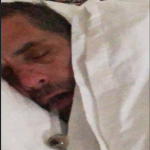I agree, Linda.Linda3032 wrote:I hope this thread doesn't scare away any potential Respironics buyers. My feeling is that not everyone will read everything written in this thread. Many newbies will only read the highlights and perhaps will come away with a negative feeling. And I'm not saying that the thread started with the intent to give negative thoughts.
I owned those two models too, and liked both of them. Yes, I'd buy a Respironics machine again. In fact, I did, when I bought the BiPAP Auto.Linda3032 wrote:I've owned two Respironics Autos. One with cflex and one without. I've never, ever had a problem with either one. I have no complaints whatsoever.
-----
How do you feel about your Respironics machine? Would you buy one again? I definitely would.
I've also gotten good treatment from other brands I've used. For years, even when I was using another brand of machine, I've often recommended the Respironics Auto, especially after they added C-flex to their Auto. They make very good machines, imho. Saying that does not mean I think other manufacturers don't make equally good machines.
ANY of the machines have some features, or something about their software, that one person might love and another hate.
Any individual might find that one brand or type of machine treats their particular form of sleep disordered breathing better than another brand or type does. -SWS explained very well why that is so. His words are worth reading, re-reading, and re-re-reading, imho:
In May 2006, -SWS cautioned against labeling technical limitations as "bugs" in algorithms; listing reasons for current technical limitations in xpap machines:
Just be aware that many of those problems truly are limitations of today's technology. I'll underscore the crux of today's technical limitations one more time for the non-technical readers who are following:
1) Patient airflow signals are highly complex composite signals that are comprised of many contributing factors
2) Those highly complex composite signals, unfortunately, manifest with great diversity across the human population
3) The SDB events themselves can never be directly measured via the patient airflow signal
4) Rather, each SDB event type must be indirectly derived on a probability basis from that airflow signal
5) Because airflow signals are so complex and diverse across the human population (even more so across the SDB patient population) there are no 100% probability airflow signals.
6) The lack of "100% probability" airflow signals across the SDB patient population is precisely why any given algorithm cannot achieve a 100% compatibility or efficacy rate across the patient population.
So simply being aware of the fact that many of the problems you document have to do with technical limitations versus "bugs" will probably go a long way toward interfacing with manufacturers.
















